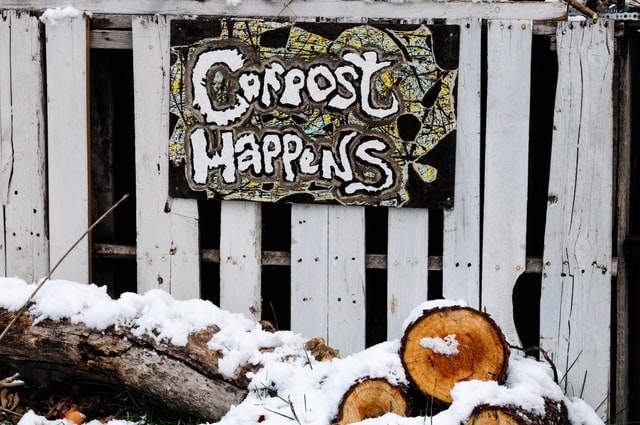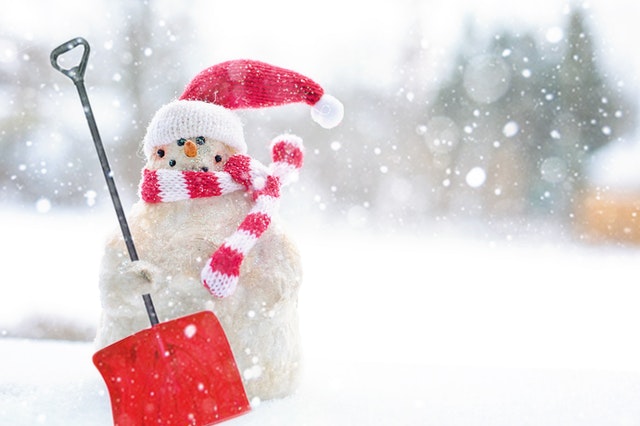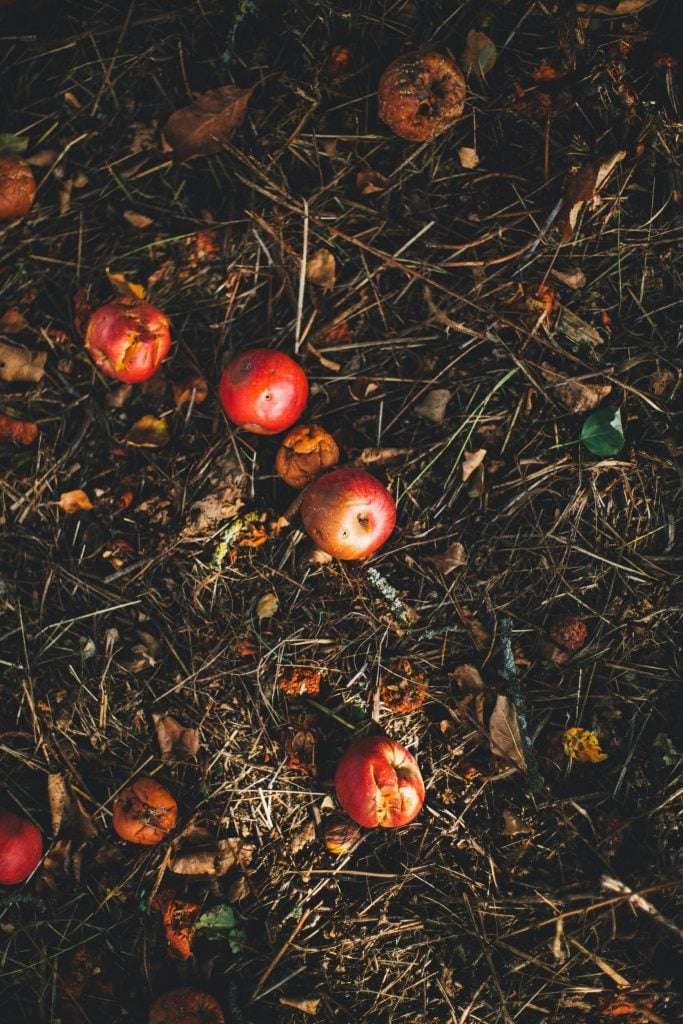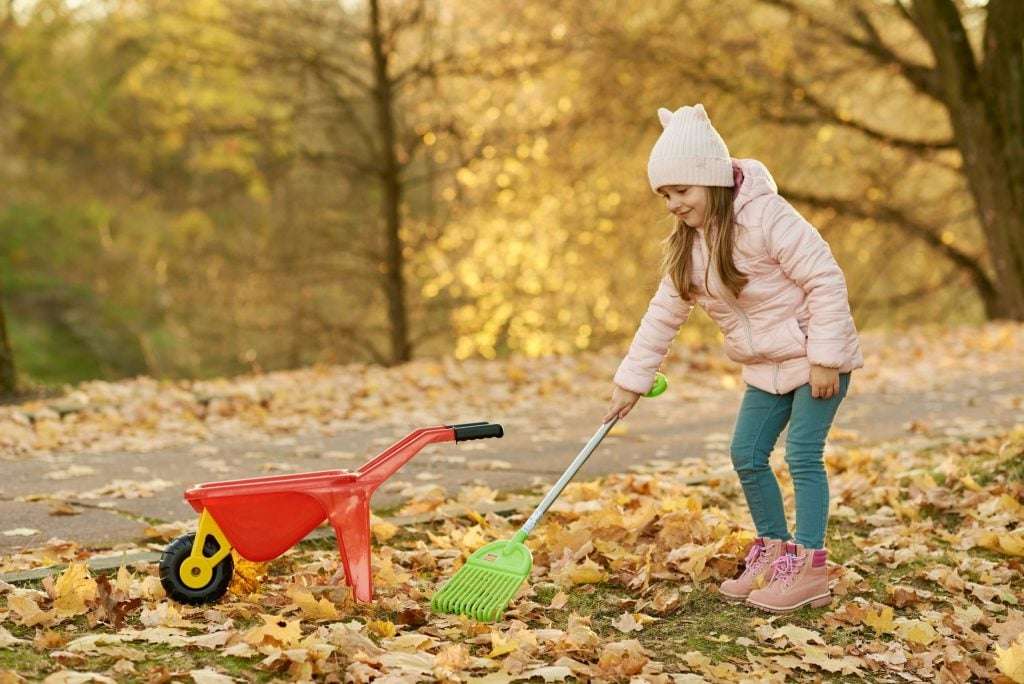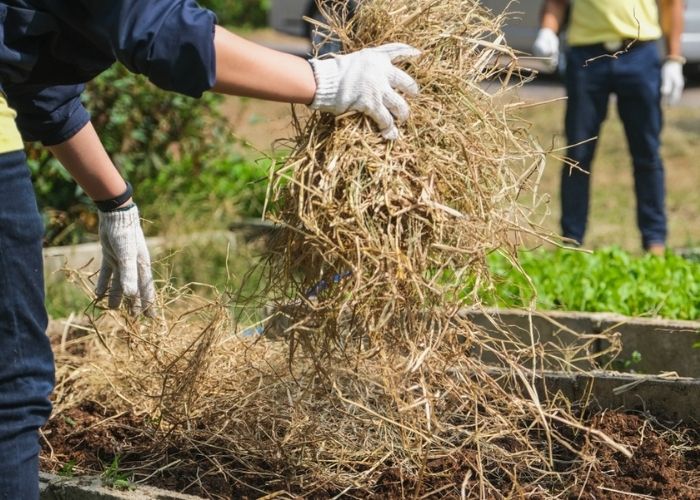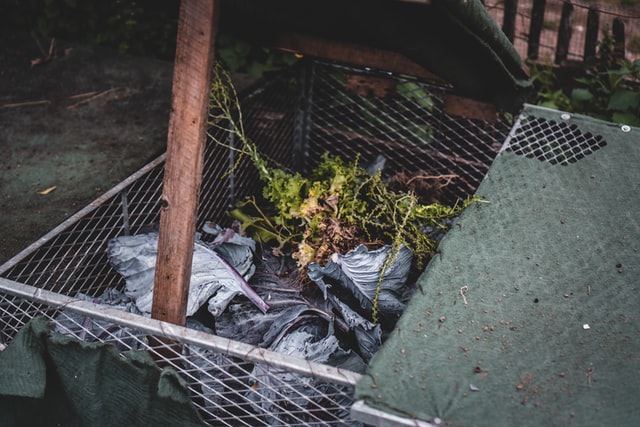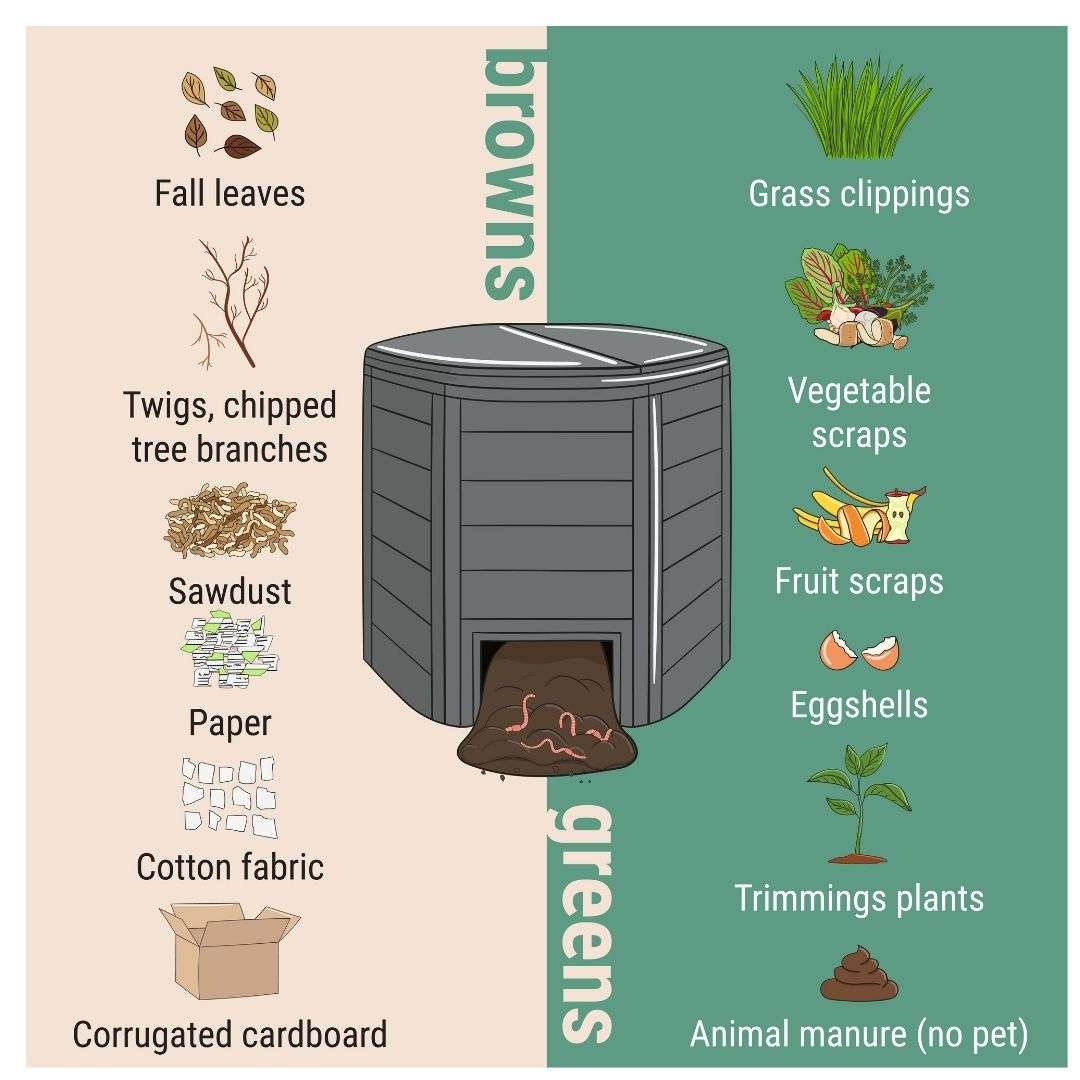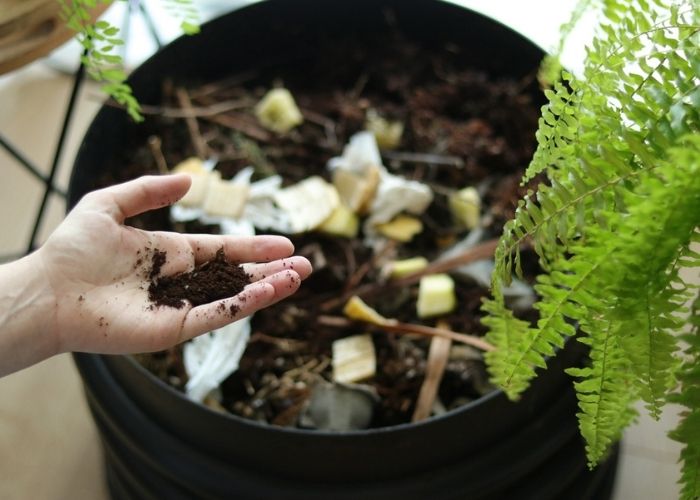Whether you grow your own veggies, or herbs and flowers are more your style, most gardeners rely on compost to nourish the soil, conserve water, and control weeds. Even novice gardeners quickly realize the many benefits of keeping a compost pile going. But composting in the fall and winter presents challenges. Without those warming rays from the sun, is it possible to keep your compost pile going? Can you even start a compost pile in the winter?
Keep reading to find out the answers to these questions and more. Spoiler Alert – the answer to the two questions above is YES!
Why It’s Harder to Compost When It’s Cold
A compost pile is nothing more than a collection of things rotting in a highly controlled manner. Sounds gross, but what composting does is control the natural decomposition process by encouraging the growth of beneficial bacteria and discouraging the nasty stuff. The health of the compost pile depends on the makeup of the pile and the environment. The fall and winter months present several challenges to your compost pile. But once you understand these challenges, they are fairly easy to overcome.
Decomposition Slows as the Temperature Drops
There’s a reason you store food in the freezer. As the temperature drops, so does decomposition. The lowest temperature for composting hasn’t been determined. Even in the extreme cold of Canada or the US plains, Midwest, or New England composting continues. But it continues at a much slower rate. The internal temperature of a compost pile can reach 135° to 160°F. The larger the pile, the more heat generated and the better prepared the pile is to stand those dropping temperatures.
Even when it’s literally freezing outside, a well-tended compost pile will not become anaerobic (fancy science talk for oxygen-deprived). The challenge is to retain as much heat as possible. And when fall rains and winter snows arrive, the dryer you keep your pile, the warmer it will stay.
The Carbon to Nitrogen Ratio Gets Skewed
During the spring and summer months, you have ample sources of carbon to add to your compost pile. But after the big clean-up in the fall, carbon is hard to come by. You continue to add nitrogen out of habit, but without the necessary addition of carbon, your ratio gets a bit off-kilter. Remember, a good rule of thumb is two (2) carbons for every (1) nitrogen with the sweet ratio being 25 – 30: 1.
So when it gets cold and your supply of carbon is gone, if you keep adding nitrogen, your pile can get so hot that you kill the very microbes you are trying to nurture. And you don’t want that!
Feeding the Pile Is Harder
Keeping the decomposition process going, even in cold weather, requires continual feeding. If you don’t feed your compost regularly, decomposition stops. Let’s face it, when the weather is cold and blustery you really don’t want to be working outside. It’s easier to curl up with a book and a cup of tea than put on your boots and trudge through the mud or snow to tend your compost pile.
Don’t be too hard on yourself – it’s only human. But one of the greatest challenges to composting in the fall and winter is overcoming inertia. You’ve got to make like Nike and just do it!
Keeping Your Established Compost Pile Going
Now that you know the biggest challenges to composing in the cold, it’s time to come up with an action plan. Don’t ignore your compost as the days grow shorter. Keep feeding your compost and use these tips to keep your pile going strong all winter long!
Move Your Compost Pile Closer
If your compost pile is close by, you’re more likely to take care of it. So, divide your compost pile. Harvest what’s complete and spread over your flower and vegetable beds and in tree wells to tuck them in for a long winter’s nap. In the spring, you can turn the compost in when you turn the soil.
Now, take a look at what’s left. This is the compost that is still in progress. If you have a large compost pile, it’s not necessary to move the entire thing. Just fill a trash can about ½ to ¾ full of your compost and place it close to the back door.
To make things easier, you may even want to invest in a portable compost tumbler to use in the colder months. The key to this trick is getting that tumbler or temporary compost can as close as possible to the back or side door. The shorter the walk to the compost, the greater the chances you will care for it. And that’s how you’re going to overcome the inertia.
Store Up Carbon
You won’t be feeding your compost as often as you do in the warmer months, but you will still need to feed the pile.
Make like a squirrel and store up for the cold months. But instead of collecting nuts and seeds, you should collect leaves in bins or bags as part of your fall cleanup. Keep them covered to protect them from moisture. Wet leaves create a matted mess. A wet, matted mess is the last thing you want to add to the compost you are trying to keep dry.
As you need to add carbon, add leaves from your stash. For even better composting action in the cold weather, chop your carbon into small pieces. Small pieces decompose faster. So run the lawnmower through the leaves before you store them up for the cold months.
Even in cold weather, you’ll still be producing nitrogen-rich kitchen scraps to add to the pile. By storing carbon in advance, you’ll ensure you always have carbon to add along with your nitrogen.
Keep Compost as Dry & Warm as Possible
If you don’t move your compost to a trash can or tumbler, you need to devise a way to keep it as dry as possible. Maximize the pile’s sun exposure. The more sunlight it gets, the faster it will dry out if/when it does get wet. This means keeping the pile away from fences or behind the garage where it will be shaded from the sun.
If you only have shady areas for your compost pile, then you may as well consider taking it on a field trip for the colder months. If you can’t keep it out of the shade, at least you can keep it dry by moving it to a covered area like a carport. Or cover your compost pile with a tarp to keep rain and snow off the pile. Even placing straw bales or a layer of loose straw or pine needles on the pile will help keep it dry and warm. Compacting the pile into a smaller area is also another way to keep the composting action going.
Don’t turn the pile when rain or snow is in the forecast, even if your compost pile is covered. Wet carbon and nitrogen can’t overcome the cold and break down. You don’t like to be cold and wet and neither does your compost pile.
Keep on Turning
During fall, continue to turn the pile several times a week. As long as the weather is dry and no rain is in the forecast, you need to turn as much as possible. As the temperatures drop, keep turning. Continue turning up to the first freeze. Then when you get a warm spell, turn again.
Provided the weather is dry and the pile isn’t frozen, even if it is cold outside go ahead and turn your pile. Each time you turn, add your carbon and nitrogen to the middle of the pile.
In spring and summer, you can get by merely adding to the top of your pile. But when composting in the fall and winter you’ll want to put your additions in the middle of the pile where the temperature is the highest.
Now, there are plenty of gardeners in the coldest areas that don’t turn their compost at all once temperatures are consistently below freezing. Their compost piles are usually well-established and well-insulated. This approach isn’t recommended for novice gardeners or new composters.
Starting a Compost Pile When It’s Cold
If looking at all those fall leaves is leaving you inspired to start a compost pile, take heart. You can start composting in fall and winter and come spring you’ll reap the rewards of your first harvest.
Start your pile with finely chopped dry leaves and twigs and small pieces of green, organic matter. Remember the keys to successful composting in the cold is to compost small pieces and keep the pile warm and dry.
Begin your compost with the perfect 30:1 carbon to nitrogen ratio.
To reach this ratio remember this simple rule of thumb:
1 PART BROWN : 2 PARTS GREEN
Brown represents your carbon and provides the microbes with the energy they need to thrive. Add brown in the form of dry organic plant material or strips of paper.
Green represents your nitrogen and gives the microbes food to grow. Add green in the form of green vegetative matter, coffee grounds, kitchen scraps, eggshells.
If you want to kickstart your compost pile, head over to the local bait stand and buy some red wrigglers. If you don’t live by a bait stand, buy your worms online. Yes, the internet is an amazing thing, and you really can buy worms online!
Because you are starting during the colder months, you might want to start with an insulated compost bin (which will cost you several hundred dollars) or a compost tumbler (which can be found for less than $100). Either of these containers will be easy to keep by the back door and won’t attract rodents, flies, or create odors.
What to Add to Your Compost Pile
The following items are sources of carbon and nitrogen that you can safely add to your compost pile.
- Scraps of fruit, vegetables, and herbs from the kitchen
- Eggshells
- Coffee grounds and paper coffee filters (no K-cups allowed)
- Teabags
- Nutshells (except walnuts – see below)
- Shredded newspaper
- Cardboard torn into small pieces
- Paper that has been shredded
- Yard trimmings
- Grass clippings
- Houseplants that did not die from insect infestation
- Hay and straw
- Leaves
- Sawdust
- Wood chips
- Cotton cloth
- Wool cloth
- Human hair
- Pet fur
- Fireplace ashes (wood ashes only)
What NOT to Add to Your Compost Pile
Some things are not meant to be composted. They either encourage the growth of the wrong microbes, or they attract rodents to the pile. Here are the items you should leave out of your compost pile:
- Pet waste: the feces of meat-eating animals contains harmful microbes)
- Walnuts, walnut shells, or the leaves, twigs, or bark of walnut trees: they release a substance that inhibits plant growth)
- Meat or fish bones and scraps: these often attract rodents.
- Diseased or insect-ridden plant matter: it’s never good to cultivate harmful pathogens or insects.
- Used charcoal briquettes: commercial charcoal contains harmful chemicals, but all-wood charcoal is okay.
- Coal ash: throws off the pH balance of the soil.
Remember, when starting a compost pile in cold months or replenishing an existing pile, it’s important to chop each item that goes in as finely as possible. The smaller the piece, the faster it decomposes, and the better equipped it is to overcome the challenges of decomposition in cold temperatures.
Hello Spring!
Once the temperatures start to warm and the days grow longer, keep a close eye on your winter compost pile. If it was covered in snow, the pile will get wet as it thaws. You may need to spread the compost out to help it dry. Another approach is to add the last of your carbon stash to the pile to help soak up that moisture.
Spring marks the return of the frequent turning routine. As your compost returns to life, you should return to a regular turning of the pile, about 3 times per week.
If you didn’t add worms in the fall, now is the time to jump-start your pile with these garden-benefitting invertebrates. Once the ground is thawed, you can dig them yourself or order them from the internet.
Following these tips for composting in fall and winter ensures you have a readily available source of compost to start your seedlings or enrich your garden beds.

About the Author
Cheryl is our go-to guru for all things sustainable living. She’s on a mission to make your family and our planet thrive! With a heart as big as her passion for sustainability, Cheryl brings you the freshest insights on eco-friendly building products and energy efficiency. 🌱💡
And hey, did you hear about the eco-friendly lightbulb that went to therapy? It finally found its inner “enlightenment”! 😄 Join Cheryl on this green journey, where she’ll tackle your concerns with a smile and a sprinkle of eco-humor!

